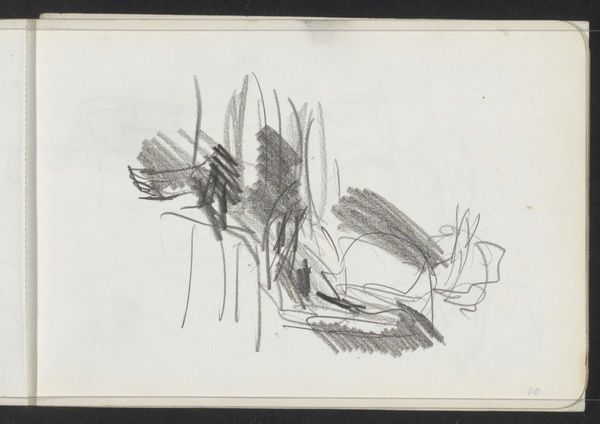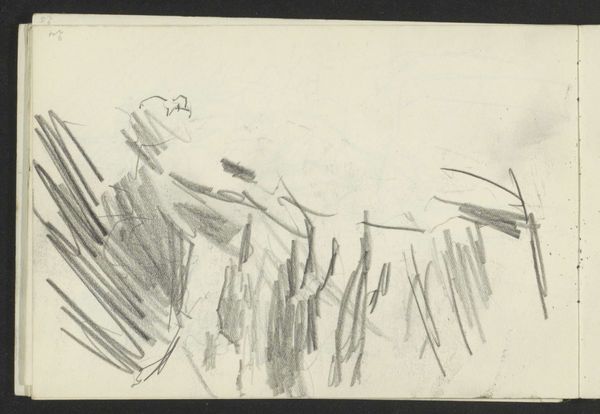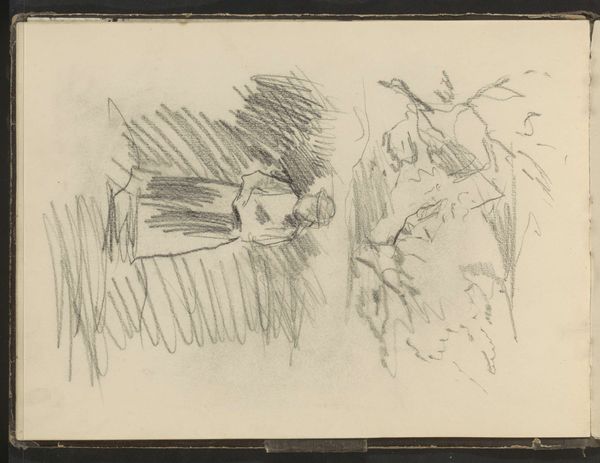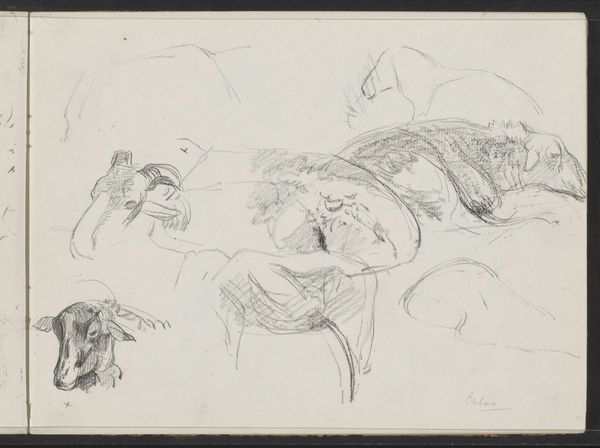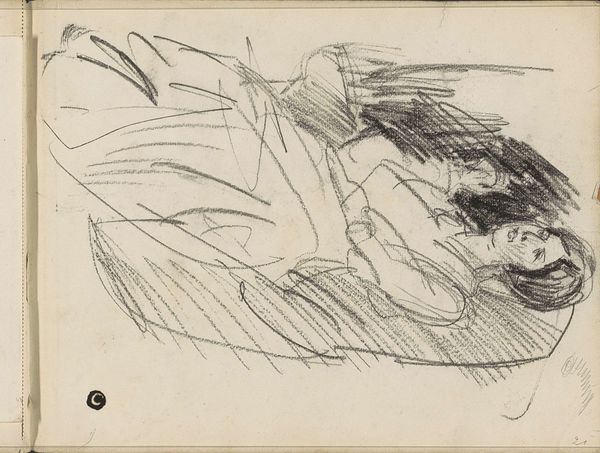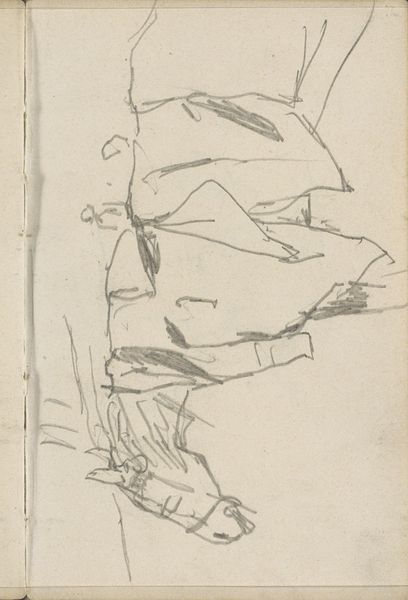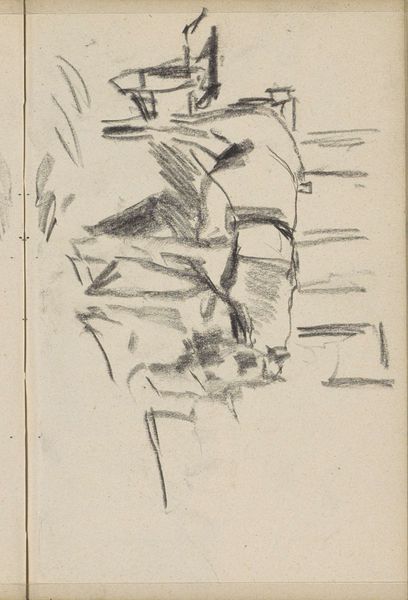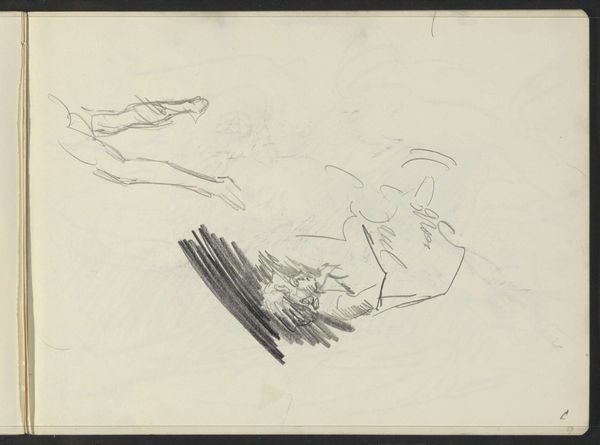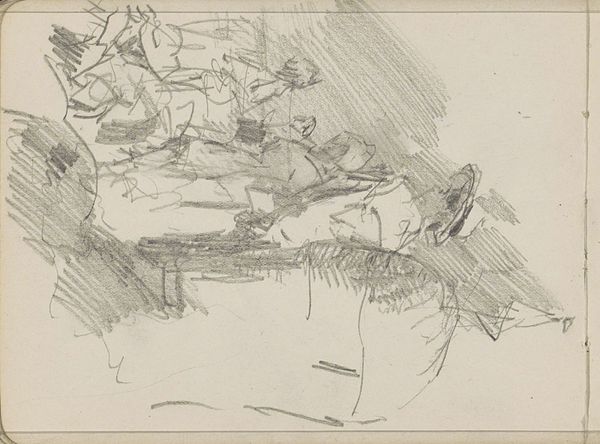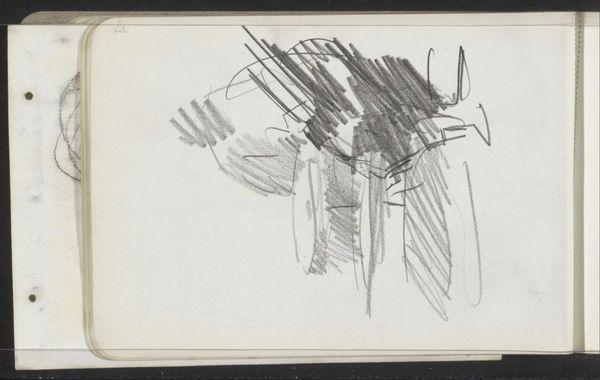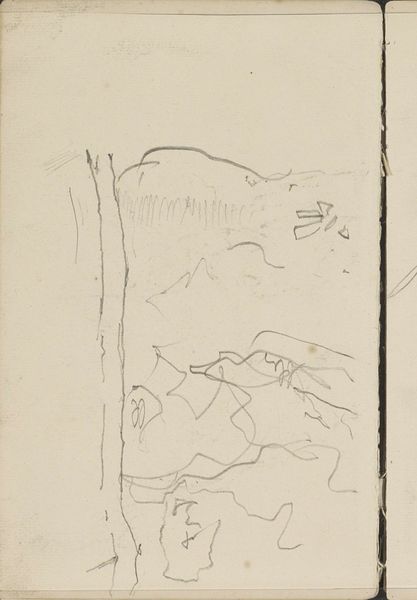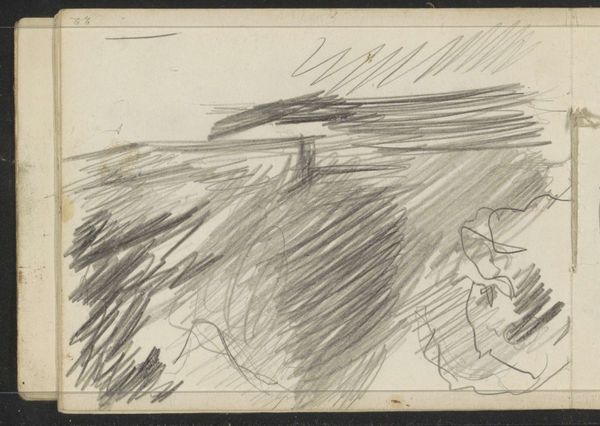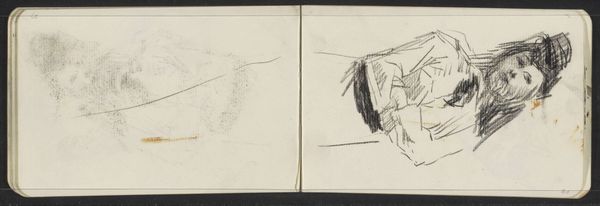
Copyright: Rijks Museum: Open Domain
Editor: Here we have Isaac Israels' pencil drawing, "Standing Women in Costume, possibly Variety Dancers," created sometime between 1875 and 1934. It’s at the Rijksmuseum now. There's something about the quick, almost ephemeral lines that makes the women feel a bit ghostly or dreamlike. What do you see in this piece? Curator: It's fascinating how Israels captures these women – we might see them as archetypes. Consider how the theatre, even variety shows, become a kind of symbolic space. Do you see how their costumes suggest a particular role? It evokes figures in historical tapestries but now viewed with modern psychology. Editor: Yes, I see that a bit. The suggestion of elaborate costumes without fully defining them does give that effect. Why is that, do you think? Curator: Think of costume itself as a visual language. A shorthand for social standing, occupation, aspiration. The quick rendering and loose handling suggest it might all be artifice or that this reality is only being ‘performed’. Are they, even now, conveying similar social roles as women within art through history? The visual symbol is transformed in time, with an eye to gender expression or roles for women. Editor: I hadn't considered the costuming in that symbolic way before. It does make the sketch feel more layered, almost as though there is a history inscribed within each of the pencil lines. Curator: Precisely. These figures might carry layers of societal projections, and maybe Israels gives us an ambiguous key to read it with this fast drawing. Editor: That’s such a different lens than how I would’ve approached it initially! It’s shown me that these lines point beyond themselves and point at a cultural memory and transformation that occurred around gender norms in art.
Comments
No comments
Be the first to comment and join the conversation on the ultimate creative platform.

